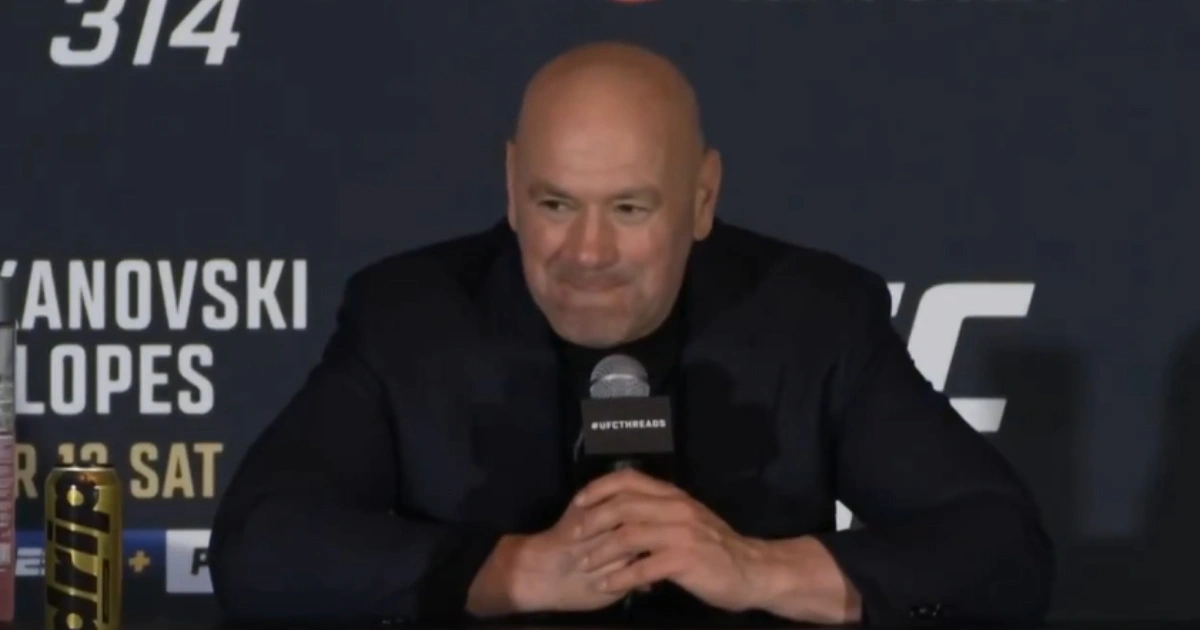As the UFC prepares to explore new broadcast opportunities, Dana White’s insights reveal the dynamic landscape of sports media and the future of mixed martial arts. With a potential shift in networks, fans and analysts alike are keen to see how this move could redefine the viewing experience and impact the sport’s growth.
The Future of UFC Broadcast Rights and What It Means for Fans
As the UFC approaches the end of its broadcast rights agreement with ESPN, the excitement and speculation among fans and industry insiders are palpable. This upcoming negotiation period represents a pivotal moment for the organization, with potential implications for how fans engage with UFC events in the future. With the exclusive negotiating window closing soon, Dana White has hinted at the possibility of pursuing partnerships with various networks, which may lead to diverse ways of consuming UFC content. Fans are eagerly considering whether this means more accessibility, differing programming formats, or perhaps innovative broadcasting solutions.
The landscape of sports broadcasting is transforming rapidly, and the UFC aims to capitalize on these changes. Since signing a lucrative $1.5 billion deal with ESPN in 2018, the UFC has become a fixture on the network, cementing its presence within the sporting world. However, as negotiations for the next deal commence, the organization is poised to explore other opportunities, particularly in light of the content delivery evolution shaped by tech giants. Whether it involves aligning with streaming services, adopting unique pay-per-view models, or even emulating the successful strategies of the WWE, the outcome of these negotiations could redefine how fans experience UFC events.
Insights from Dana White on Upcoming UFC Negotiations
Dana White’s recent comments at the UFC 314 post-fight press conference shed light on the organization’s expectations for the upcoming negotiations. Despite the productive relationship with ESPN, White remains open to exploring various broadcasting opportunities. He stated, ‘When the window opens, we’ll obviously start talking to lots of different people,’ indicating a proactive approach to securing the best deal possible for the UFC. His appreciation for the ESPN partnership does not discount the desire to maximize revenue and fan engagement in future broadcasting agreements.
The mention of a potential target of over $1 billion annually for new UFC broadcast rights reflects the growing valuation of combat sports within the media landscape. As White noted, negotiations will likely involve accommodating the needs of the network or streaming service, which could lead to adjustments in the number of events or how they are formatted. Given that the UFC is set to host 42 events in 2024, the alignment of scheduling expectations with broadcast requirements is essential in determining the viability of future partnerships.
The Impact of UFC Pay-Per-View Changes on Fans and Revenue
As the UFC considers changes to its pay-per-view model amid evolving broadcasting strategies, both fans and industry experts are curious about the potential consequences. Dana White hinted at the possibilities of switching to different formats, such as placing events behind a paywall or exploring alternative broadcasting methods resembling methodologies from other sports organizations. This could either enhance fan accessibility or create new challenges, depending on how these changes are implemented.
With the sports broadcasting rights landscape becoming increasingly competitive, adapting the pay-per-view model could also significantly bolster UFC revenues. Fans have grown accustomed to various payment structures in the digital age, and how the UFC responds to these changes will be critical. Whether the organization chooses to expand pay-per-view access via platforms like Netflix or maintain traditional methods will likely shape the future revenue streams and viewing habits of millions of UFC enthusiasts.
Analyzing the Current UFC ESPN Deal and Its Extensions
The UFC’s current agreement with ESPN, which was solidified in 2018 for $1.5 billion, set a new standard for sports broadcasting rights. This deal marked a significant shift for the UFC, establishing a multi-platform presence that included traditional cable broadcasts alongside digital streaming options. The extension added an additional two years and has played a crucial role in expanding the UFC’s fan base while allowing for a consistent revenue flow.
During the initial phase of their partnership, there were notable challenges, but over time, the relationship between the UFC and ESPN has cultivated a unique synergy. Dana White praised ESPN for its commitment to promoting UFC events, reinforcing the notion that successful sports partnerships require flexibility and adaptation. The upcoming negotiations will explore whether this once rocky start evolves into a long-term alliance or whether the UFC finds more lucrative opportunities elsewhere.
How UFC Negotiations in 2026 Could Reshape Broadcasting
As the UFC prepares for its upcoming negotiations in 2026, the implications for sports broadcasting could be significant. The organization has openly embraced a forward-looking mindset, suggesting a willingness to adapt to evolving viewer preferences. White’s commentary on potentially being featured across various networks is indicative of a significant shift from traditional single-network agreements, allowing for broader distribution and engagement across media channels.
Such negotiations could also align the UFC with emerging trends in sports media, perhaps integrating streaming services or opting for a hybrid model that includes both live broadcasts and on-demand content. Fans could see the benefits of increased availability and flexibility in viewing options, while the UFC can maximize revenue through multiple revenue streams, particularly in light of anticipated changes to pay-per-view arrangements.
The Role of Competition in Future UFC Broadcast Rights
Competition in the broadcasting arena will undoubtedly influence the future of UFC’s broadcast rights. As various networks vie for premium sports content, the UFC finds itself in a powerful position to negotiate terms that best fit its growth strategy. By allowing other networks into the conversation, the UFC can create a competitive environment that potentially yields more lucrative and fan-friendly agreements.
Additionally, the ability to explore partnerships beyond traditional sports networks can open new avenues for revenue and audience engagement. Whether it’s through digital media partnerships with platforms like Amazon Prime or collaborations with innovative technology companies, evolving competitive dynamics will shape the decisions made during negotiations.
Exploring New Broadcasting Opportunities for UFC Events
With the end of the current agreement with ESPN drawing near, Dana White’s aspirations for the UFC’s future include broadening the network of broadcasting opportunities available. The organization is keenly aware of how shifts in viewing habits among audiences can inspire new relationships with networks that are more in tune with modern consumption habits. By entering discussions with a variety of networks, the UFC could find creative ways to enhance the viewer experience.
In such a competitive marketplace, the potential for new broadcasting options could present a significant advantage, enabling the UFC to innovate its delivery for its global fanbase. By evaluating the unique offerings of various networks, the UFC may cultivate new strategies that attract even wider demographics, aligning with trends towards more comprehensive access to live sports.
Fans’ Perspectives on Changes to UFC’s Broadcast Strategy
As the UFC gears up for potential changes to its broadcast strategy, fans are naturally anxious about what these shifts could bring. Many have developed a loyal relationship with ESPN and appreciate the consistency it has provided through its coverage of UFC events. However, the prospect of new networks joining the fray offers an exciting opportunity for fans to experience the mantra of ‘more is better’ in various forms of sports engagement.
Fan opinion may split between those who seek the reliability of their current viewing options and those yearning for new choices that better meet their demands. Ultimately, the dedicated UFC fanbase will be vital in shaping how the organization navigates these transitions, as their preferences and feedback will likely influence potential broadcast models that cater to the evolving sports landscape.
UFC’s Future Strategy and Potential Impact on Pay-Per-View Market
As Dana White discusses the upcoming negotiations, it’s clear that potential changes within the UFC could have far-reaching effects on the pay-per-view market. The organization’s current model has been successful, but adapting to the rapidly changing preferences of consumers will be vital in ensuring ongoing popularity. The UFC’s exploration of different broadcasting strategies, including possible direct-to-consumer models or streaming arrangements, could reshape how pay-per-view events are marketed and consumed.
Alongside anticipated shifts in broadcasting partnerships, changes to the pay-per-view system may reflect broader trends in subscription-based services which provide fans with more accessible and convenient viewing options. By shifting its focus to create tailored viewing experiences, the UFC has the potential to revolutionize fan engagement and redefine its revenue model, particularly in an era when audiences prioritize flexibility and value in their consumable content.
| Key Points |
|---|
| Dana White’s update on UFC’s broadcast rights deal with ESPN, set to expire in 2026. |
| Current exclusive negotiating window with ESPN ends on Tuesday, allowing exploration of new deals. |
| UFC signed a $1.5 billion deal with ESPN in 2018, initially for five years, extended in 2019. |
| UFC may partner with multiple networks in the future, similar to other sports. |
| White highlighted a strong relationship with ESPN despite initial challenges in their partnership. |
| UFC aims to secure over $1 billion annually in the new broadcast deal. |
| Potential exploration of streaming options like WWE, impacting the pay-per-view model. |
Summary
UFC broadcast rights are entering a pivotal era as the exclusive negotiating window with ESPN wraps up soon. This gives the UFC the opportunity to explore potentially lucrative agreements with other networks, especially as the current $1.5 billion deal is set to expire in 2026. Dana White’s comments reflect an openness to new possibilities, highlighting both the successes and challenges of the past partnership with ESPN. The UFC’s ambition to secure over $1 billion annually for its new rights emphasizes the rising value of sports media. As the window opens for negotiations, it will be interesting to see how the UFC navigates its future direction in broadcasting.


 Subscribe
Subscribe




